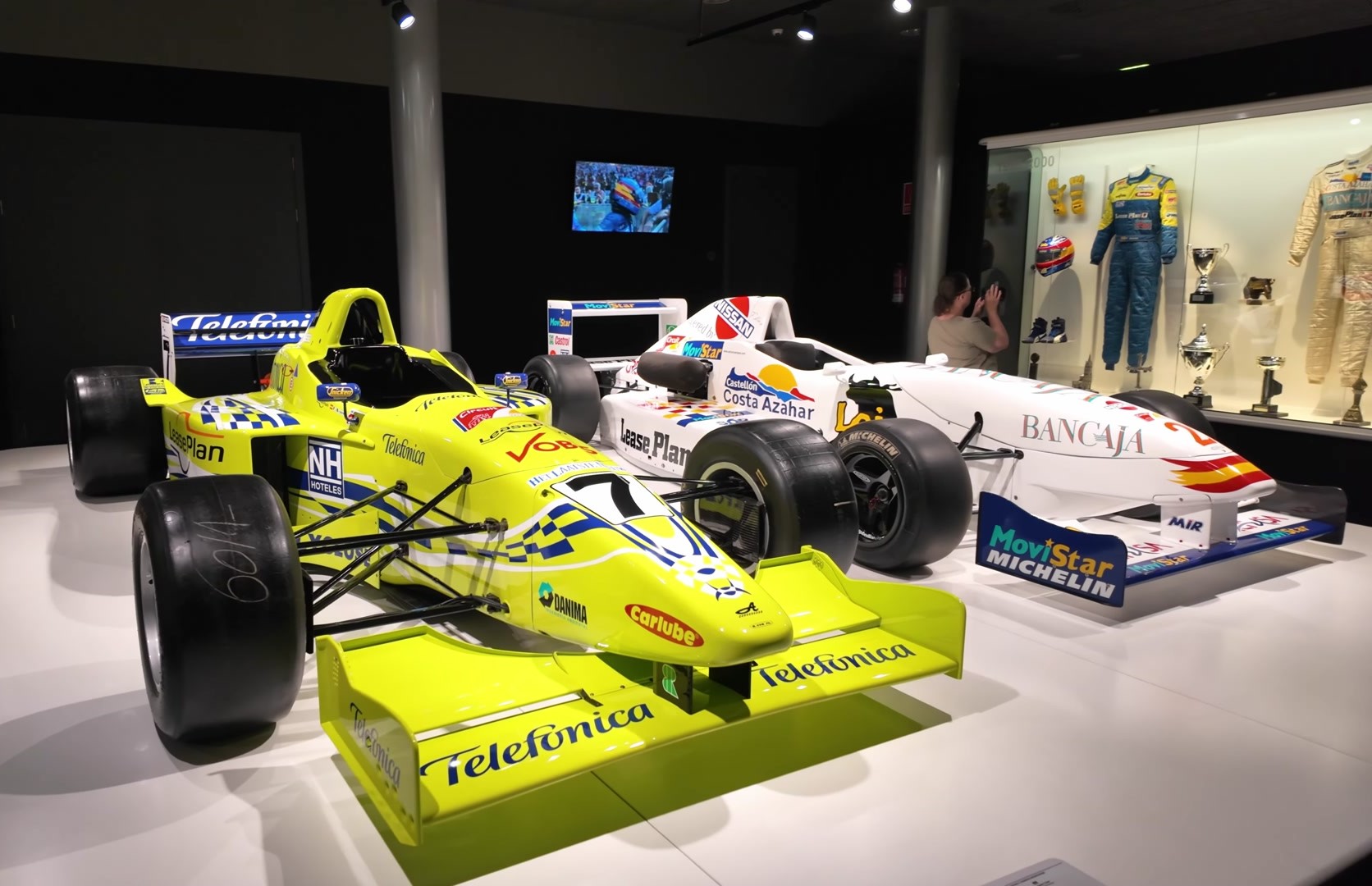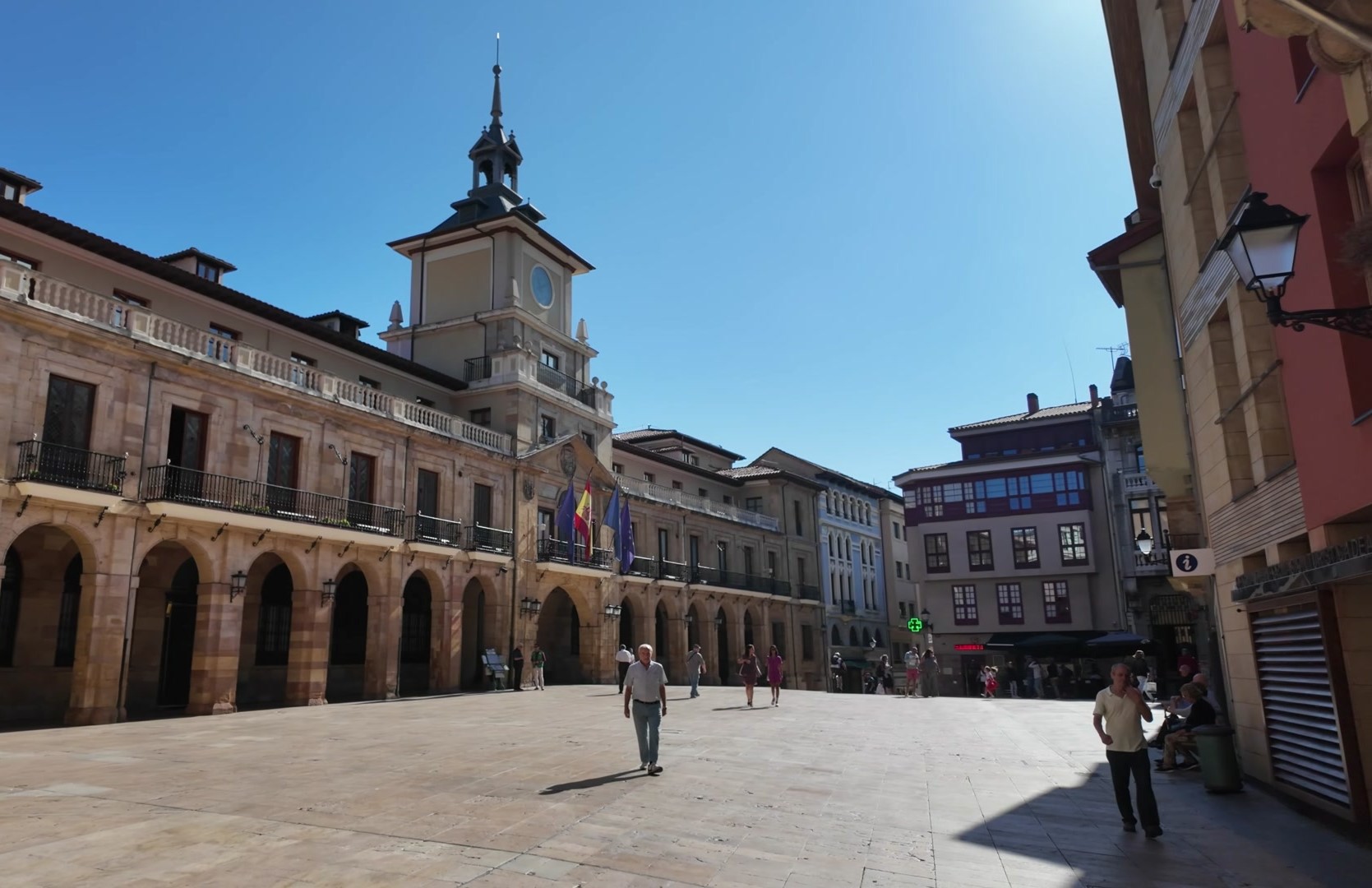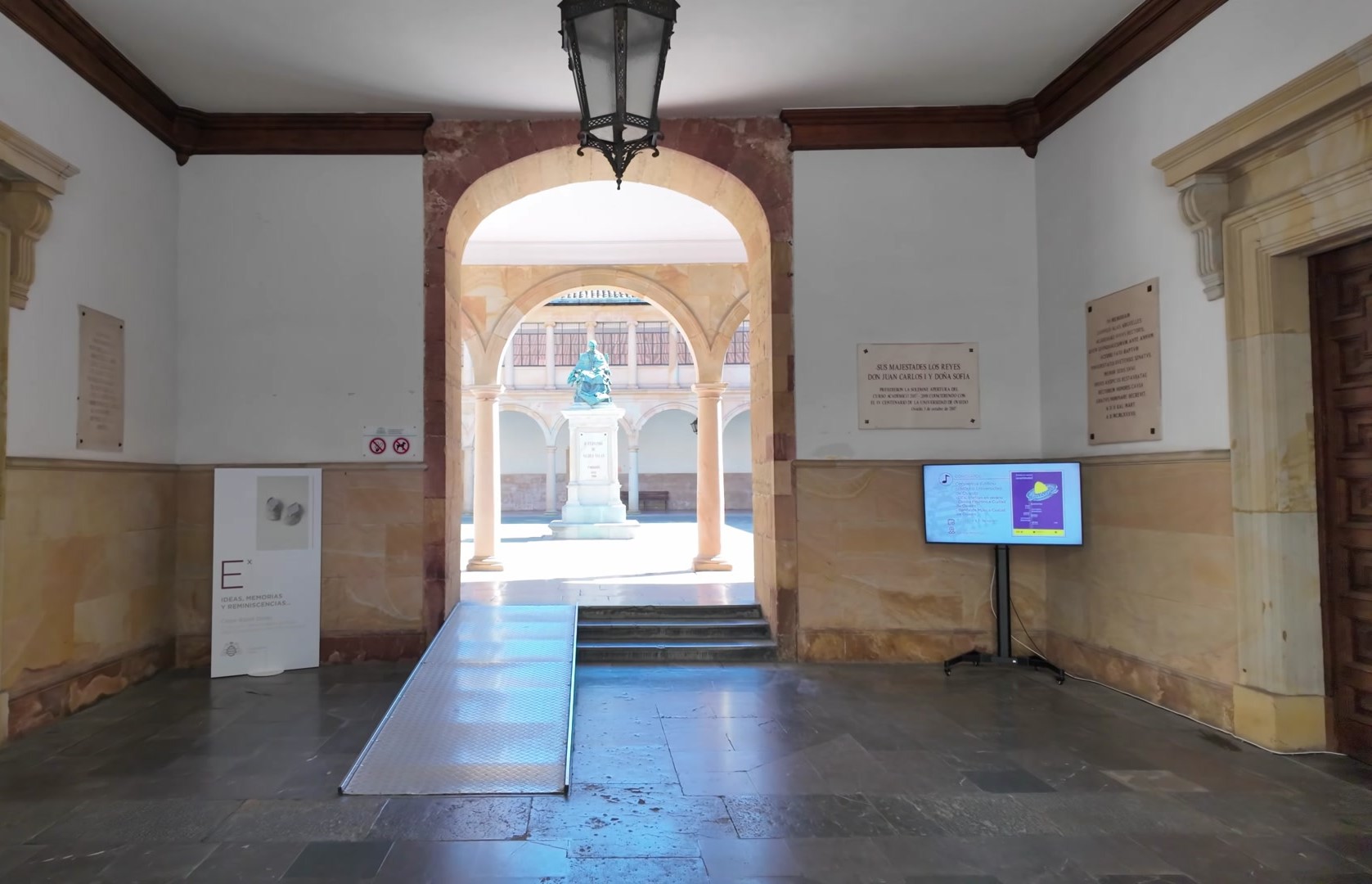Hello friends. We started our trip to Oviedo, the capital of the Asturias autonomous region from mount Naranco. This location marks the beginning of the city's history, as the King of Asturias decided to build a palace for himself here. However, due to certain reasons the palace was never completed and was eventually transformed into a church. This church, located on the slopes of the mountain is a Romanesque architectural masterpiece.

At the very top, we reached the Sacred Heart Statue offering a breathtaking 360-degree panoramic view. From here we could see the entire city laid out before us, almost like holding it in the palm of our hands. Among the sights were historic landmarks like the famous Oviedo Cathedral, natural beauty such as San Francisco Park and modern architectural highlights like La Colora. We could also glimpse the ocean and the neighboring coastal city of Gijón. A magnificent spot from every angle.

Oviedo is one of the cities that has best preserved Romanesque architecture. For example, Santa María del Naranco is a building initially intended as a palace. And there’s the San Miguel de Lillo Church, which was specifically built as a royal chapel by King Ramiro I.


Asturias first capital however, was the city of Cangas de Onís, which we visited the day before (mentioned in my previous post). After soaking in Oviedo’s beauty, we continued to explore the city. It is incredibly charming and picturesque.

One of Oviedo’s modern-day claims to fame is Fernando Alonso, the world-renowned Formula 1 driver and a source of pride for the city. A dedicated museum here celebrates his career, showcasing the vehicles he used throughout his journey. The museum begins with Fernando's first go-kart, which his father initially made for his sister but later modified for him. At the time little Fernando’s feet couldn’t reach the pedals, so the go-kart was specially designed for him. It was painted in McLaren colors, inspired by Ayrton Senna, who was young Fernando's idol.


Fernando’s career took off with significant achievements in go-karting, including winning the junior championship at the age of 14 in 1996 with car number 14, which became his iconic number. He progressed through Formula Nissan and Formula 3000 before finally entering Formula 1. He joined Renault, where he achieved monumental success, winning the World Drivers Championship in 2005 and 2006.

In the early stages of his career, Fernando joined Ferrari and raced there for four years. Vehicles he drove during this period are on display at the museum. Later he fulfilled his childhood dream of racing for McLaren, Ayrton Senna’s team. One of the standout exhibits is a specially designed orange car from his last season with McLaren.

The museum also displays the suits and helmets Fernando wore during races. An interesting detail is that the helmets were custom-designed for each race. For instance, during the prestigious Monaco Grand Prix, Fernando wore a gold-colored helmet while racing for Ferrari, symbolizing the significance of this iconic event.



After setting new goals following his time at McLaren, Alonso participated in the 24 Hours of Le Mans endurance race. This was an incredible experience and a race that demands constant driving, endurance and focus. Yet Fernando succeeded here as well and vehicles designed for such races are displayed in this location. And as someone who has competed in rallies, he also raced in desert rallies with Toyota’s off-road trucks. In other words Fernando Alonso has competed across many different disciplines on four wheels with various types of vehicles. Currently he continues racing with the Aston Martin team, striving for success in today’s modern Formula 1 cars. The technological evolution of these vehicles is striking and impressive.

Fernando’s museum is incredibly informative, colorful and beautifully designed. Even if you’re not particularly interested in racing, simply appreciating the aesthetics and appearance of these designs is an enjoyable experience. Therefore if you visit Oviedo, I strongly recommend adding this museum to your itinerary.

An interesting detail is that there’s a street named after Fernando Alonso here. Similarly, there is another street named after the famous Spanish designer Patricia Urquiola. Patricia began her career here in Oviedo before launching her design career in Italy.

After visiting the museum, we headed towards the city center. Oviedo’s city center has a very charming structure. It’s lush with greenery and exceptionally clean. In fact, Oviedo is considered one of Spain’s cleanest cities. The city is quite cool, making it a pleasant place for walking and exploring, thanks to the northern climate. You’ll find a mix of architectural styles here, from modern buildings to classic ones. Some buildings resemble a northern, almost Scandinavian style.

We also came across many beautiful sculptures and small architectural details. The city’s architecture is diverse, combining various design styles. These small touches give Oviedo a distinct and delightful character.


One notable point is that Asturias is not a wine-producing region. Instead, its traditional beverage is cider or apple wine. This area seems to be very rich in apples, making apple-based products quite popular here.

If you’re looking to cool off, there’s even a street called Apple Boulevard. On our way there I want to mention our gastronomic experience, as it’s worth noting that in 2024, this region was named Spain’s gastronomic capital. We visited Gloria, a restaurant recommended by the Michelin Red Guide and it was delightful. Its interior design leaned towards a northern style, reminiscent of Belgium, but it offered a cozy atmosphere and delicious cuisine at very reasonable prices.

Portions here are quite generous, so we took our time. We tried the Russian salad, which is somewhat like a Spanish version of Olivier salad but made with tuna. We also sampled various salads, which were excellent. Grilled artichokes were a standout dish and we also tried a Vietnamese-inspired dish blended with Spanish flavors, incorporating pork. The cheesecake was fantastic. Bask cheesecakes are very popular here. Asturias cuisine offers an exceptional gastronomic experience and of course, their cider is a must-try.



One of the most significant symbols of the historical center in Asturias is the San Salvador Cathedral. It is one of the oldest cathedrals in Spain, built in 767 ad. Its construction took many years, resulting in a blend of Romanesque, Gothic and Baroque architectural styles. The cathedral houses two sacred relics of great importance to Asturias: the Angel’s Cross, gifted by King Alfonso II and the Victory Cross, the emblem on the flag of Asturias. We had seen a replica of this symbol on the Roman Bridge in Cangas de Onís, a town known as the first capital of Asturias.

Inside the cathedral, there is a museum displaying numerous religious artifacts and sacred relics. Visually it’s very impressive, with dramatic shadows cast by the columns and arches. It’s a must-visit location.







Near the cathedral is the Asturias Museum of Fine Arts, housed within a modern structure built over old facades. Unfortunately, it was closed for lunch when we visited, but the architecture was remarkable. You can explore its art collection if you have time.

The city also features a lovely market. Like a typical Spanish market, it offers fresh produce like tomatoes, cucumbers and other fruits and vegetables. While it’s not an extraordinary market, the atmosphere is very pleasant.


Constitution square is home to the city hall, a building designed in the classic Spanish style. Although it differs from our traditional concept of a main square, strolling here is enjoyable. Exploring the old streets and examining the architectural details is a delightful experience. The city exudes a very peaceful atmosphere.


Another important site is the University of Oviedo, founded in 1608 a historic building with a rich legacy. Located in the heart of the city center, Saint Francis Square is also a notable spot. You can take a walk here and rest in the cool shade. The square features a lovely promenade paved with marble stones, making it a pleasant route to explore. The park also hosts various sculptures, fountains and historical remnants.





At the end of our walk following our lunch, we visited the Congress and exhibition center. This structure was designed by the renowned architect behind Valencia’s spectacular City of Arts and Sciences. It’s not just a convention center but also serves as a hotel. Its famous dome or helmet-like shape is actually the main area for hosting events. Surrounding this is the hotel section, whose interior design was also crafted by Santiago Calatrava. The hotel’s conference rooms are named after different projects by Calatrava. One of these is inspired by Valencia’s City of Arts and Sciences and another, Torso, is named after Calatrava’s first skyscraper built in Malmö.

This building is quite imposing, even evoking a somewhat alien-like feel. In contrast, the surrounding residential buildings are very simple and unremarkable. They lack the luxurious or high-end appearance you might expect, instead showing traces of older, modest architecture reminiscent of Soviet-era Khrushchyovkas. Nevertheless, due to their minimalist design and prime location property prices in these areas are likely to be high.



I thoroughly enjoyed my time here and will definitely return. I wholeheartedly recommend this magnificent region and the amazing city of Oviedo to you.
You can check out this post and your own profile on the map. Be part of the Worldmappin Community and join our Discord Channel to get in touch with other travelers, ask questions or just be updated on our latest features.
Great post from the city I live in.
😻😻
!PIZZA
Thank you so much. It means a lot coming from someone who lives there. Your city is amazing 😍
Wow, @larissalugo - Thanks for taking us with you and showing us so many different aspects of the city! After the race museum, I didn't expect a church 😀 or the university! A little bit of everything. Love it!
I love showing all the hidden gems of the city. There’s always something unexpected around every corner😄 Thanks for the kind words 😍
Thank you for posting. All the pics of the architecture took me back to my Europe trip. That food looks to die for as well.
So happy the photos took you back to your Europe trip. And yep, the food was to die for. Definitely a highlight 😋 Appreciate your comment, it made my day
Good to hear. I need to get back there asap. The food is calling my name.
Travel Digest #2405.
Become part of our travel community:
- Join our Discord
Hiya, @glecerioberto here, just swinging by to let you know that this post made it into our Top 3 in Your post has been manually curated by the @worldmappin team. If you like what we're doing, please drop by to check out all the rest of today's great posts and consider supporting other authors like yourself and us so we can keep the project going!Thank you so much. I really appreciate the support 😊
Keep up the great work 💪